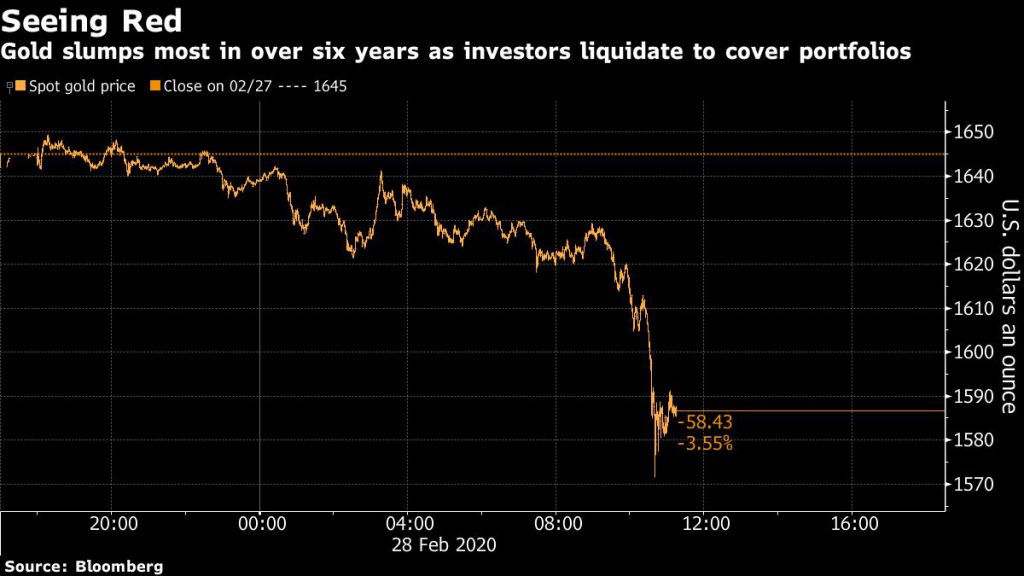
With stocks in freefall, investors usually turn to gold as a haven of last resort. On Friday, things got so bad that they had to cash in on the metal to cover losses in other markets, spurring its biggest drop since 2013.
Gold has now joined the global asset sell-off as investors unload the metal to cover margin calls. It also plunged as concern mounted over how the coronavirus outbreak will weaken demand in China for everything from crude to copper to gold.
The Asian nation is among the biggest consumers of bullion.
Spot gold fell as much as 4.5%, the most intraday since June 2013, according to Bloomberg generic pricing
Gold reached a seven-year high just this week on demand for havens as the virus spooked investors, with a spectacular collapse on Wall Street.
While bullion has rallied amid both risk-on and risk-off episodes, it could suffer from further profit-taking as it’s used to meet the margin calls amid the sharp declines in stocks, Suki Cooper, a precious metals analyst at Standard Chartered Bank, said in a note.
“It’s bloodshed,” Commerzbank AG analyst Carsten Fritsch said by phone Friday.
“It first started with forced selling from equity investors who also sold their gold positions to cover their losses in equities and also to cover margin calls. Gold investors don’t want to sell but are forced to cover the losses in other asset classes.”

Spot gold fell as much as 4.5%, the most intraday since June 2013, according to Bloomberg generic pricing. The metal was down 3.2% at $1,592.04 an ounce at 11:52 a.m. in New York.
“The possibility that China may be using less is hurting commodity accounts and therefore you’re going to see margin calls,” George Gero, a managing director at RBC Wealth Management, said by phone Friday.
Still, barring near-term profit-taking, risks for prices remain to the upside amid expectations that the Federal Reserve will cut interest rates twice this year, Standard Chartered’s Cooper said.
This month, bullion is little changed, bringing gains in 2020 to almost 5%, and Goldman Sachs Group Inc. has said it may hit $1,800 in 12 months.
“We think that there will be opportunities to continue to add to long exposure,” Cooper said in a Bloomberg TV interview.
“You might see a little bit of a sell-off, so there might be better entry levels. But beyond that, we think that upside risks still linger for gold.”
(By Justina Vasquez and Ranjeetha Pakiam)
Comments